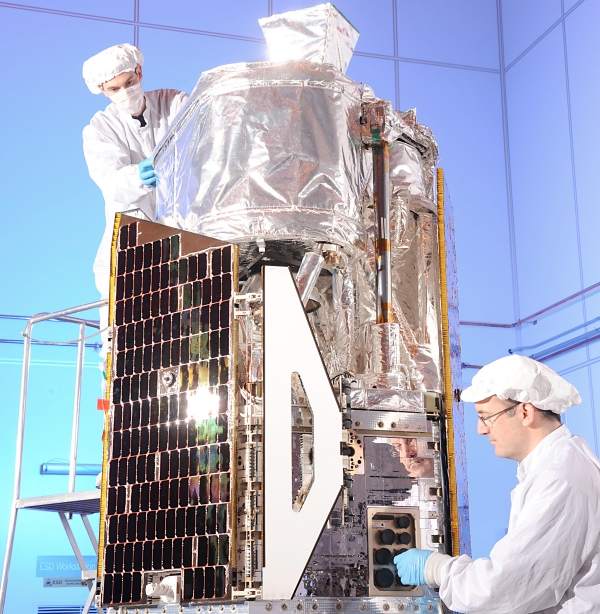NASA’s Nuclear Spectroscopic Telescope Array (NuSTAR) may be the size of a refrigerator, but it will undoubtedly help astronomers discover some of the most interesting aspects of our universe.
Indeed, NuSTAR – slated to launch on June 13 – will be the first spacecraft able to focus high-energy x-rays, the same kind of x-rays dentists use to penetrate teeth.

“We are going to open up the high-energy window on the universe,” explained Daniel Stern, project scientist for NuSTAR. “It’s going to teach us a lot about the universe, from what heats the atmosphere of the sun to understanding black holes.”
According to Stern, some of the highest energy objects in the universe have thus far remained invisible because astronomers lacked an instrument capable of focusing high-energy x-rays from black holes and stars that recently exploded. Fortunately, NuSTAR is expected to help facilitate a complete count of the black holes in the universe and measure how fast black holes rotate.
“We think two out of every three black holes in the universe are hidden,” Stern said.
Nevertheless, NuSTAR will not leave Earth orbit as it peers out at the universe. Rather, it will ride aboard a winged Pegasus rocket to an orbit close to the equator and extend a solar array for power.
“[Sure], compared to a Juno or an MSL (Mars Science Laboratory), it’s not very big. It’s [only] about 775 pounds, about the size of a refrigerator,” confirmed Garrett Skrobot, NuSTAR’s mission manager for LSP. “But it only has one basic instrument on the spacecraft itself whereas the other spacecraft have multiple instruments on them.”
After a week in space, NuSTAR will extend a 33-foot-long span with sensors at one end that will focus the x-rays the spacecraft sees. The span is similar to the one extended during space shuttle mission STS-99 for the Shuttle Radar Topography Mission.
After NuSTAR is orbiting and transmitting data, astronomers expect to link up with other observatories already in orbit, such as NASA’s Chandra X-ray Observatory. This would allow NuSTAR to observe an object or sector together with another satellite and help Chandra confirm various theories.
“We have planned observations of things we’re safely sure we’re going to see… But the big excitement is we might see things that are unexpected,” Stern added.






